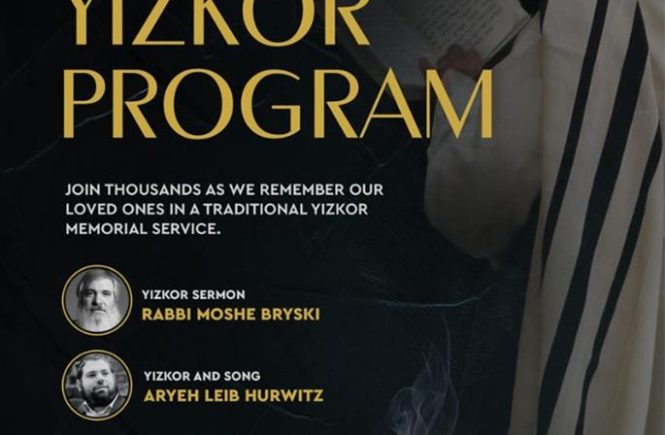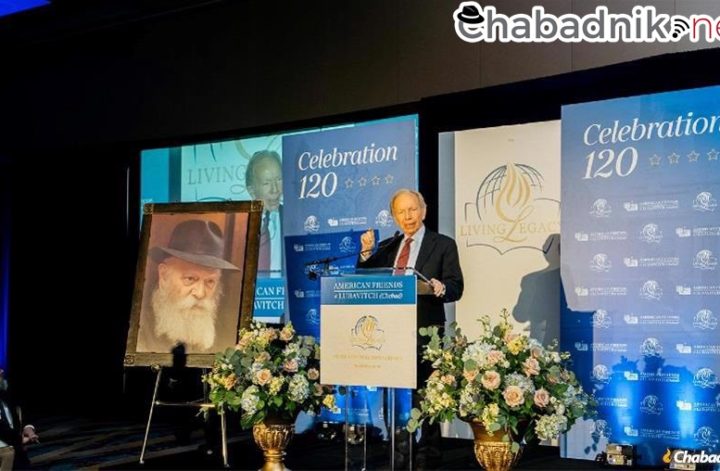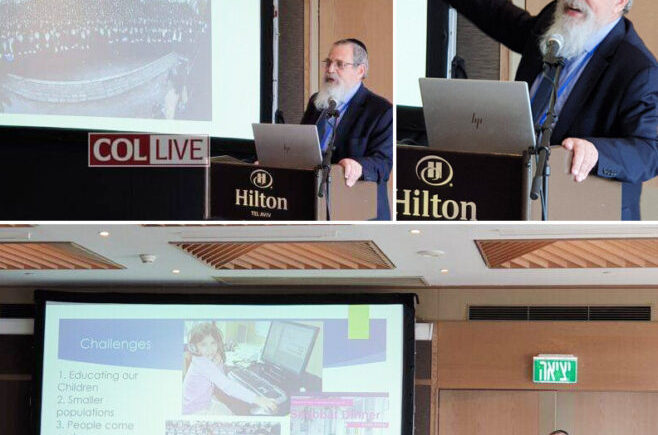Although it’s a staple of the synagogue service, the reading of the Torah remains something of a mystery to many. The Torah portion is recited in a language that few congregants know well. Fewer still are familiar with what it takes to perform a proper leining, the intricate origins of the practice, or, for that matter, why we do it at all. Here’s an up-close look at some of the whys and hows that surround this esoteric tradition.
We saved the last dance for the Torah. It was euphoric, even wild, perhaps—100 people dancing around a single scroll. It will be another twelve months before we whirl about on the shul’s dance floor in quite the same way. The High Holidays are now behind us, and the humdrum of daily life resumes. But we haven’t tucked the scroll away until next year. Not by a long stretch.
On this Shabbat, as on every Shabbat, an adoring throng will sing to the Torah when it emerges from the Ark. Regular shul-goers are accustomed to what happens next, but the mystique of the moment, with all its captivating power, remains all the same.
The scroll’s embroidered cover is removed, and the parchment, which is wrapped tightly around two carved wooden rollers, is unfurled. The Torah itself is exposed: soft and endless undulations of shade—a creamy white in newer scrolls, or perhaps a yellowed beige in older ones. And then there are the letters.
The squared, Hebrew characters seem to sit on the parchment’s backdrop glowing with a blank power, like “black fire on white fire,” as the Talmud puts it. They are without vowels, without capital letters, without punctuation. The only embellishment on the page is a scattering of little thorn-like decorative flourishes over a few letters, like spikes on a roof—“crowns,” as they are called—but they do nothing to aid the reading or comprehension of the text. Aside from that, there are only the letters and the spaces between them, clustered into words, lines, paragraphs and columns.
Stripped of the ornaments ordinarily seen around the published word, these cryptic ciphers still wink at worlds of meaning. It is said that the great Rabbi Akiva could derive “mountains upon mountains of laws” just from the little thorns on the letters. And somehow, unlike ancient Egyptian hieroglyphs, we never forgot how to read them.
The scroll is opened to the weekly Torah portion, and one individual, called the “ba’al-koreh,” then proceeds to read, or “lein,” from the Torah. In Yiddish, the word lein is translated simply as “read,” but the art of public Torah reading demands far more than that. The ba’al-koreh is not only expected to lein the Hebrew text from the scroll, aided neither by punctuation nor vowels, but also to sing the text using a complex, prescribed melody that is not notated anywhere in the scroll. This remarkable feat is repeated not only once every week, but three times more, in abridged form, on Shabbat afternoon, and on Mondays and Thursdays.
Only one person reads from the Torah at a time, while the rest of the assembly is expected to listen in hushed repose. But not everyone is capable of following the Hebrew as it is read, and still fewer have the stamina to do so. Thus the Torah reading can at times turn into a gaping vacuum in the middle of the service, during which we are present, but only passively so. So what is our place in all this? What does the “reading of the Torah” mean for us?
The Trop
Though typically heard in sanctuaries and synagogues, the public reading of sacred texts is not limited to such settings. Every Fourth of July in the United States, listeners of National Public Radio (NPR) are treated to a leining of a very different kind. Though it may not be regarded as holy by any religious sect, the subject of this reading is a text that is sacred in the secular sense of the word, hallowed by the rituals of civic tradition, national myth-making, and the use of Capital Letters: the Declaration of Independence.
An NPR account of the tradition dates it back to 1989, after Sean Collins, then-director of the Morning Edition program, came across a reprinting of the Declaration in a local paper. Over two centuries old, the document still dazzled, untarnished by the accretions of time. Collins was determined to put those historic words on the air, precisely as they were written. They were—and annually remain—unadorned by contemporary commentary and uncorrected by contemporary editors. (Collins insisted on reading the Declaration with all of its archaic formulations intact, even if eighteenth century English “doesn’t roll off the tongue today,” and despite his staffers’ urge to “edit Thomas Jefferson’s original material.”
In this annual NPR reading, the Declaration is split up into smaller portions, in order to give more reporters, newscasters, and commentators—“who clamor to be included”—the great honor of reciting these words—words that continue to provide a nation with a sense of history, identity, and destiny. These striking similarities tell us that leining isn’t entirely anachronistic.
Still, for all their similarities, it is worth dwelling on a couple important distinctions between the Declaration broadcast and the Torah reading, leaving aside, of course, the ineffably vast difference that separates these two texts: While one is a product of Enlightenment thinking, the other is an emanation of the actual Divine Infinite Light.
Firstly, and notwithstanding the challenges of presenting Jeffersonian English on the air, leining makes for a far more challenging task, for all the reasons already alluded to above: Every scroll must contain no more or less than the raw text of Torah, without any punctuation, pronunciation pointers, or diacritical marks. And since Hebrew is a consonantal language, that means no vowels either. But it’s the singing that is the trickiest part of the leining.
Trop, in the Yiddish, refers to the cantillation system that accompanies the Torah, serving as a kind of melodic overlay for the text. In Hebrew, these musical accents are referred to as ta’amim, literally meaning “flavors,” for the way that they add “taste” to the text. It has been said that the Trop are the soul of the words; they are the first and most venerable of all the biblical commentators. That’s because, along with adding a bit of spice to the text, cantillation serves two other major functions. First, the placement of the Trop often shows where the emphasis is to be placed in pronouncing particular words. Secondly, the Trop essentially serve as punctuation; the musical flairs on each word signal the end of a verse, the middle of a sentence, whether a word is to be read apart from or together with the one following it, and so on.
It’s the little lyrical nuances that these Trop add to the black and white text—their emphases, pauses, and inflections—that hint at another layer of meaning. There’s the way the trilling shalshelet announces a moment of high drama; the way that the zarka-segol pair slows the reading down before quickly bringing it up again; how the darga-sevir duo seems to create tension and then release it, like a pitcher winding up a baseball before letting it fly, as marathon leiner Jeremy Cooper (see sidebar) puts it. All of these accents help to focus the cantor, drawing him into the words of the Torah, and urging him to take another second or two to reflect on their meaning.
The History of The Cycle
The second difference between the reading of the Declaration of Independence and the reading of the Torah is that the institution of kriat haTorah goes back a ways, to a time before the United States, a time before synagogues, and a time before the very notion of fixed communal prayer. The scriptures themselves recount various public readings of G-d’s Written Word; whether by the monarch at the once-in-seven-years national Hakhel assemblies; or by such monumental figures as Ezra and Josiah.
But, these kinds of grand, national readings were all relatively rare events; outside of such occasional ceremonies, the Torah doesn’t explicitly refer to the kind of routine readings with which we are familiar. To discover the provenance of kriat haTorah as we know it today, we will have have to unroll the scroll a little further.
It is certainly clear that Jews have been arranging regular readings for a very long time—that fact is a matter of historical record. The great Roman-Jewish historian Josephus, in his polemical work Against Apion, describes the prevailing tradition of reading the Torah: “not once for all, or twice, or on several occasions, but that every week men should desert their occupations and assemble to listen to the Law and to obtain a thorough and accurate knowledge of it….”
Even as he attests to the utility of these regular listening sessions as a method for “education and moral training,” he maintains that the custom is unique to the Jewish people: “[A] practice which all other legislators seem to have neglected.”
But most remarkable in Josephus’s ancient testimony is how far back he dates it. In his approving account, the prescient “legislator” who “appointed the Law” and “ordained” that it be regularly read was none other than Moses himself.
Thus his account tracks perfectly with the tradition recorded in the Talmud, which finds an allusion to these regular readings in the Torah itself, while hinting at their deeper purpose. Immediately after the biblical account of the Exodus, we find the Israelites walking “for three days in the desert, and they did not find water.” “Water,” the Talmud asserts, refers to “nothing other than Torah,” and it was to this end—so as to quench a spiritual thirst—that the “prophets among them” ordained that that the Torah be publicly read every Shabbat, Monday, and Thursday, so that three days would never again pass without Torah. These readings were then formalized later on by another great legislator, Ezra, after the destruction of the First Temple and subsequent Exile.
The basic pattern of regular, localized, public Torah readings that took hold in the centuries between Moses and Ezra is straightforward enough; accounting for the content of this kriah is a more complex story: Establishing that the Torah ought to be read publicly is one thing, but determining what is to be read is another. While the Talmud suggests that Moses might have also established the convention of reading biblical passages about each Jewish holiday when that holiday occurred, it doesn’t speak to how Torah readings were selected for all the weekday and Shabbat mornings in between.
There are no clear sources about the further development of this tradition, but it has been suggested that, for a long time, the content of the communal leining each week would be selected by the local community leader. Later on, with the destruction of the Second Temple, and the subsequent shift away from a religious rite centered on Jerusalem, an orderly reading cycle of the entire Torah, “interrupted” only by the special readings on the festivals, began to emerge.
By this time, however, the Jewish people had dispersed and become concentrated around two major population centres: Israel, and Babylon. Around these two poles, two separate Torah-reading systems emerged. To the “East,” Jews residing in the Holy Land began cycling through the entire Torah over the course of three years, or perhaps three-and-a-half. This meant splitting up the Five Books into something like 154 smaller portions, depending on which weeks are “interrupted” by special readings. Meanwhile in Babylonia, the “West,” a tighter reading system split the Torah into fifty-three or fifty-four sidrahs, so as to complete the entire cycle in a single year.
“Two Jews, three opinions,” they often say. Certainly, those synagogue bookshelves sagging under the weight of so many prayer books, each tailored to the boutique prayer rite of another congregation, substantiate that old saw. But in this case, instead of propagating ever more reading regimens, the opposite occurred, and a rare convergence of custom ensued: The annual, fifty-four-sidrah cycle, which originated in Babylon, now reigns supreme across the Jewish world.
Once established as an annual cycle, tying the Torah reading to the current holiday was a natural fit, thereby embedding the divine source of Jewish learning into the fabric of Jewish life, intertwined with the very warp and woof of weeks and seasons—with its festivals and special days. Even its Mondays and Thursdays.
An Inheritance
But any purported benefit of kriah—whether its purpose is strictly informative or whether it serves to nourish in some deeper sense—is presumably lost at the language barrier. Not everyone has had the good fortune of learning Hebrew in time for their bar or bat mitzvah; even fewer can follow the reading in real-time. What educative utility can there possibly be in listening to the Torah reading in a language one does not understand?
Perhaps the answer lies in the system of reading just described. Each year, we conclude the annual cycle where we began on the holiday of Simchat Torah, literally the “Joy of the Torah.” But just how does one rejoice in the Torah?
Rather than read from it, the custom is to keep the Torah scroll rolled up, with its mantle and crown still on. And then—with the Book kept closed and close to their hearts, the People still celebrate it. The outpouring of joy, dance, and song in synagogues on Simchat Torah suggests that there is more to this picture: Our attachment to the Torah goes beyond its capacity to inform, educate, or even inspire.
The Torah, as the Lubavitcher Rebbe has explained, is referred to as the “inheritance of the congregation of Jacob,” and an inheritor need only be born: “From the moment one emerges into the world, one comes into possession of the entire Torah.” It was for this reason that he encouraged even very young children to be present when the Ten Commandments are read publicly each year on Shavuot; whether they can understand the reading is beside the point.
All of which is to say that the reason we assemble each Shabbat, and a few more times in between, is about more than how well we can follow along with the reading. To be sure, it is vital that we follow along and—even better—understand the kriah. But reading the Torah is best understood as a communal experience; not as a study session, but as an affirmation of our identity. We listen to the leining not only because it is the Law, but because it is Life.
Source: http://lubavitch.com/news/article/2109279/Black-Fire-White-Fire.html



